The Gold-Silver Trading Opportunity Nobody's Talking About

The Gold-Silver Trading Opportunity Nobody's Talking About
By:Kai Zeng
Investors can use pairs-trading to capitalize on the current lack of correlation in the prices of the two metals
- Gold and silver prices historically maintain a strong correlation (0.8), making divergences potentially tradable.
- The current ratio of 92 far exceeds the 97.5% of historical occurrences.
- This elevated ratio suggests gold may be relatively overvalued compared to silver.
- Pairs trading strategies (long silver/short gold) offer a way to trade the potential reversion while maintaining market neutrality
- Both futures and exchange-traded funds (ETFs) provide flexibility based on the size of the account and trading preferences
Gold has surpassed the $3,000 per ounce threshold for the first time, marking a historic milestone in precious metals markets. Meanwhile, silver, despite reaching multi-year highs, continues to trade well below its all-time record, creating an interesting dynamic between these two traditionally correlated metals.
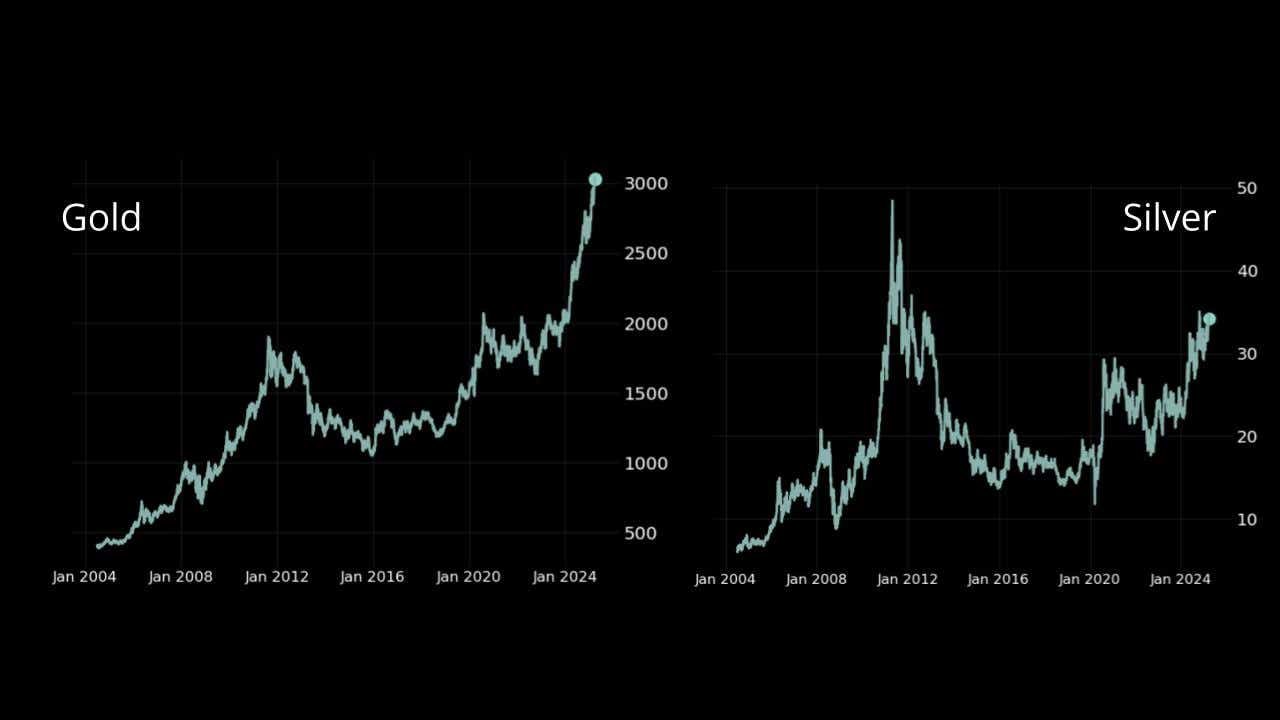
Gold and silver prices typically move together, demonstrating a strong +0.8 correlation over time. This relationship makes sense given both metals' similar roles as stores of value, inflation hedges and safe-haven assets. However, lately these metals have been moving in different directions more frequently, presenting unusual trading opportunities.
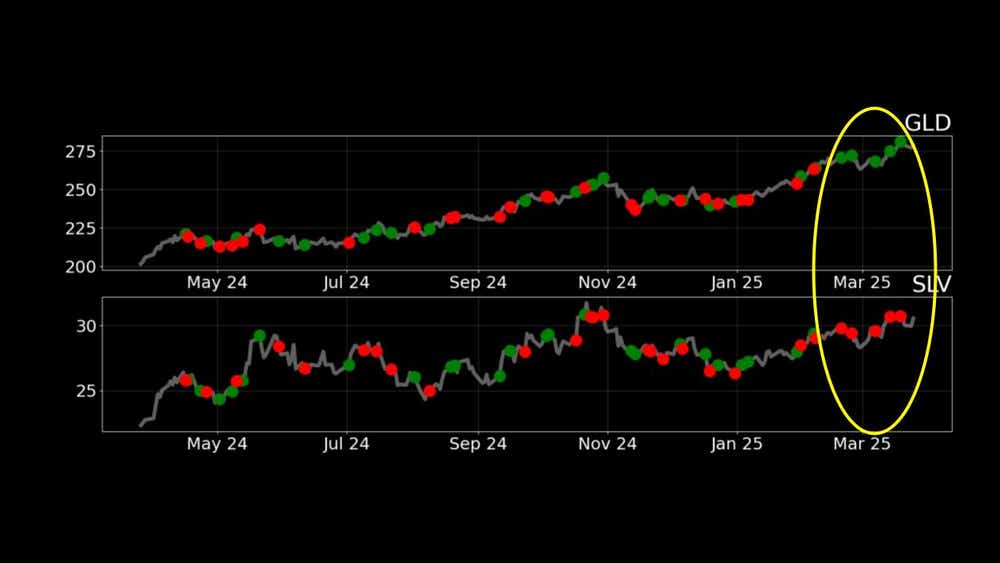
The increasing price disconnection between gold and silver has caught the attention of experienced traders. This divergence isn't random—it represents a tradable pattern that can be measured and potentially exploited through pairs trading strategies.
Traders commonly use the Gold/Silver ratio to identify imbalances between these correlated assets. This ratio is calculated by dividing the price of gold by the price of silver, indicating how many ounces of silver it takes to purchase one ounce of gold.
Recently, the Gold/Silver ratio hit 92, approaching its highest level outside the 2020 pandemic spike. For context, this ratio has only been this elevated about 2.5% of the time in the last twenty years. Historically, when the ratio reaches such extreme levels, it often reverts toward its long-term average, presenting a potential mean-reversion opportunity.
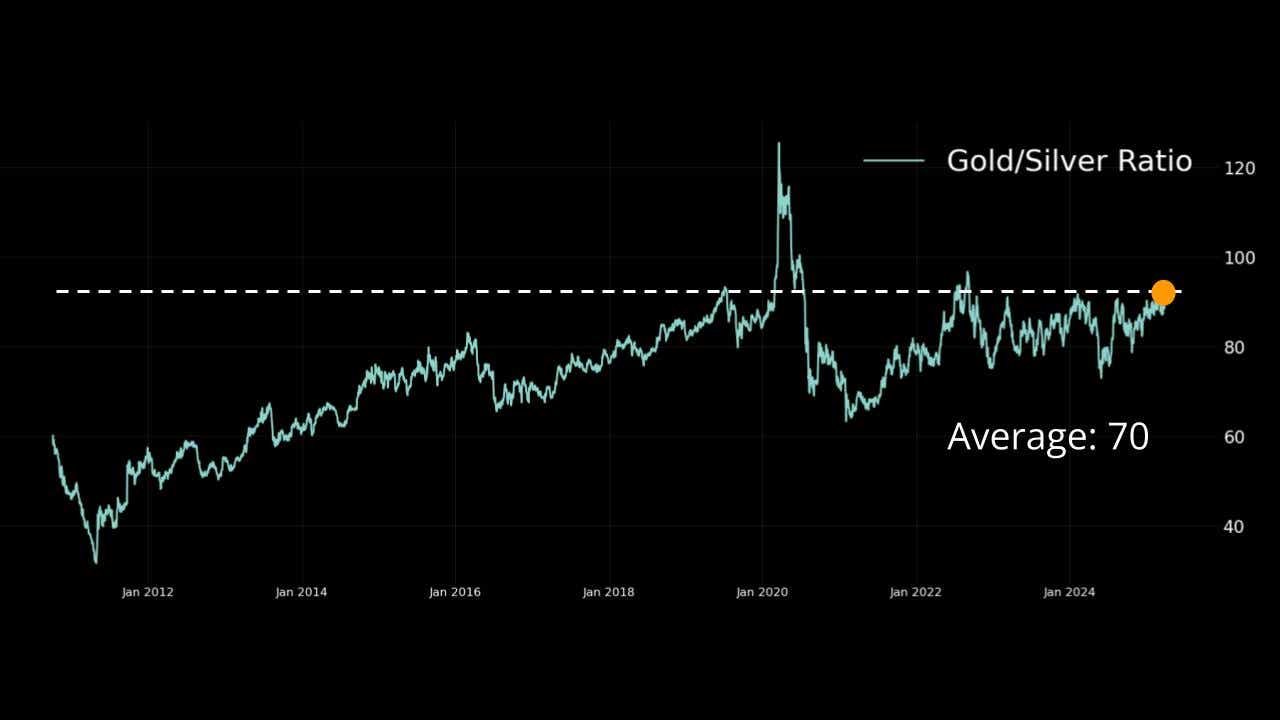
For contrarian traders who expect the gold-silver gap to narrow, pairs trading offers a market-neutral approach to capitalize on this expectation. This strategy involves simultaneously selling the relatively overvalued asset (gold) and buying the relatively undervalued asset (silver).
Based on current implied volatility-adjusted notional values (as of March 25), gold and silver futures can be paired at a 1:1 ratio to create balanced exposure. This approach allows traders to focus on the relationship between the metals instead of the direction of the overall precious metals market.
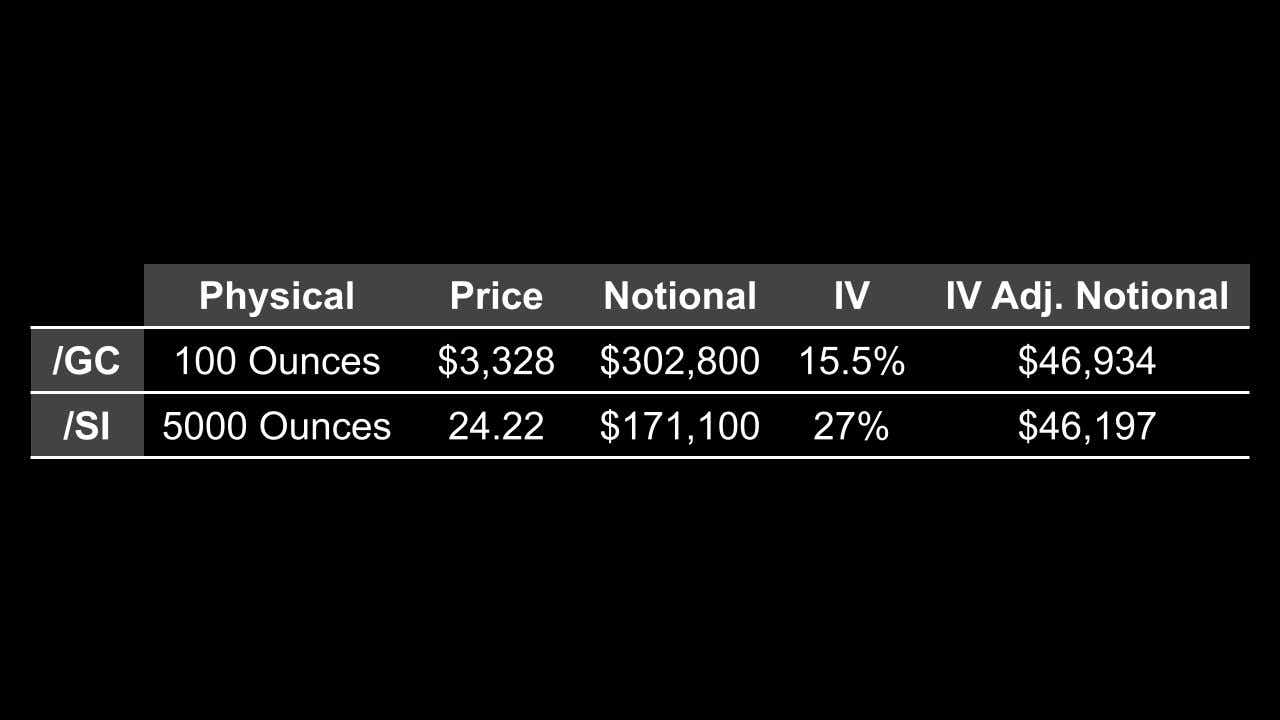
For traders who find standard gold (/GC) and silver (/SI) futures contracts too capital-intensive, more accessible alternatives include micro-sized futures contracts (/MGC and /SIL), which require smaller margin requirements but the same trading ratio, and highly liquid ETFs like GLD and SLV, which can be traded at a 5:1 ratio (five SLV contracts for each GLD contract).
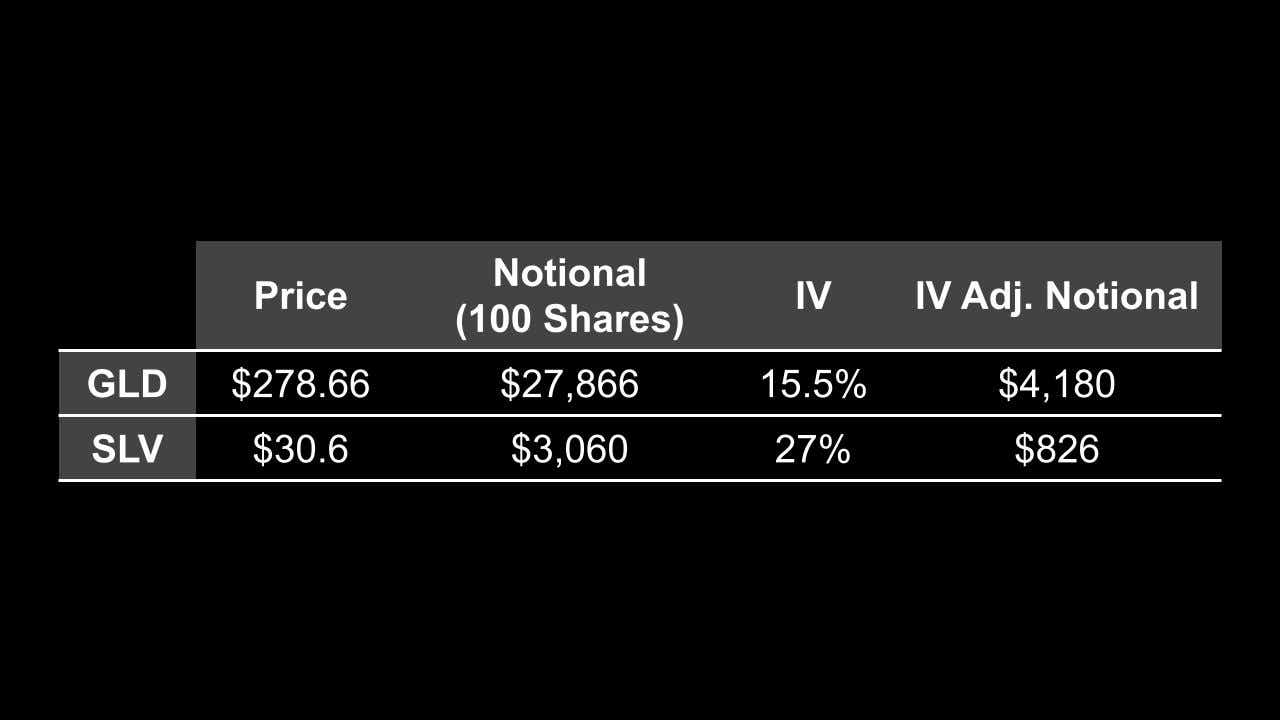
Kai Zeng, director of the research team and head of Chinese content at tastylive, has 20 years of experience in markets and derivatives trading. He cohosts several live shows, including From Theory to Practice and Building Blocks. @kai_zeng1
For live daily programming, market news and commentary, visit tastylive or the YouTube channels tastylive (for options traders), and tastyliveTrending for stocks, futures, forex & macro.
Trade with a better broker, open a tastytrade account today. tastylive, Inc. and tastytrade, Inc. are separate but affiliated companies.
Options involve risk and are not suitable for all investors. Please read Characteristics and Risks of Standardized Options before deciding to invest in options.